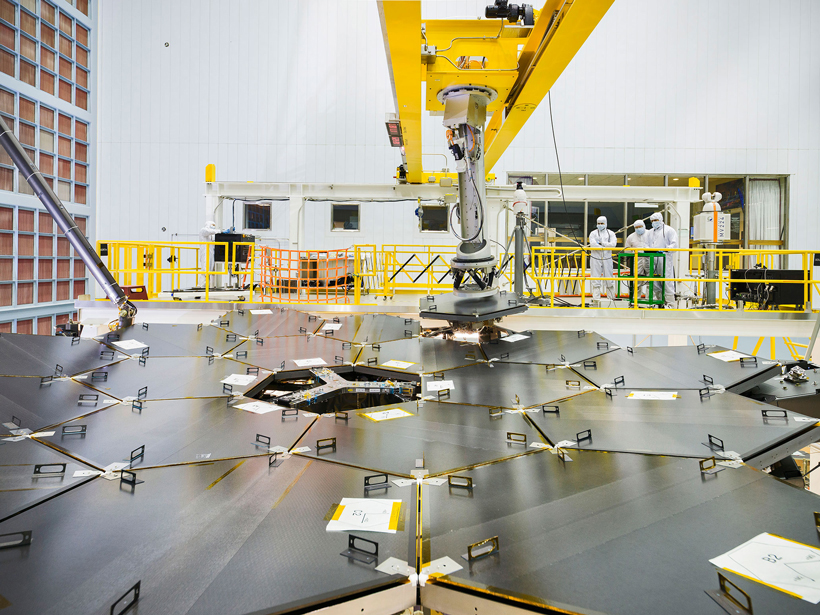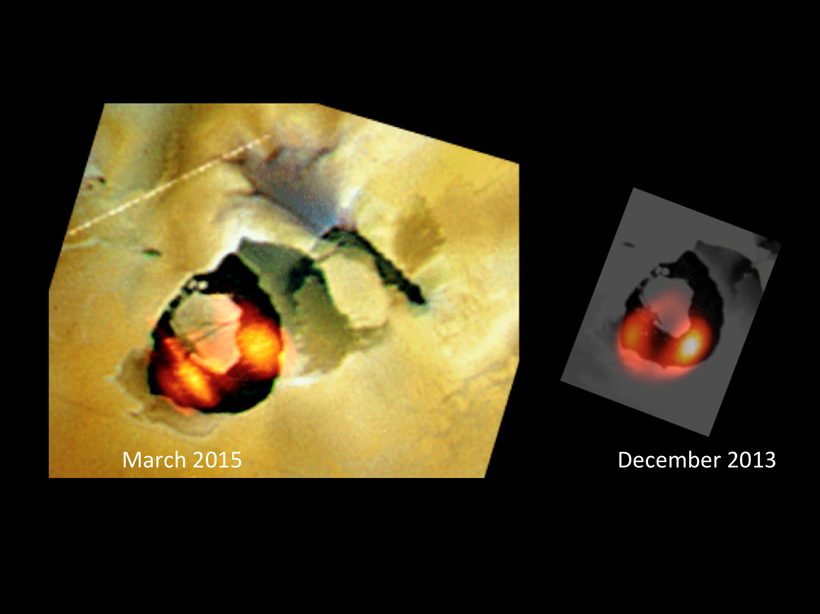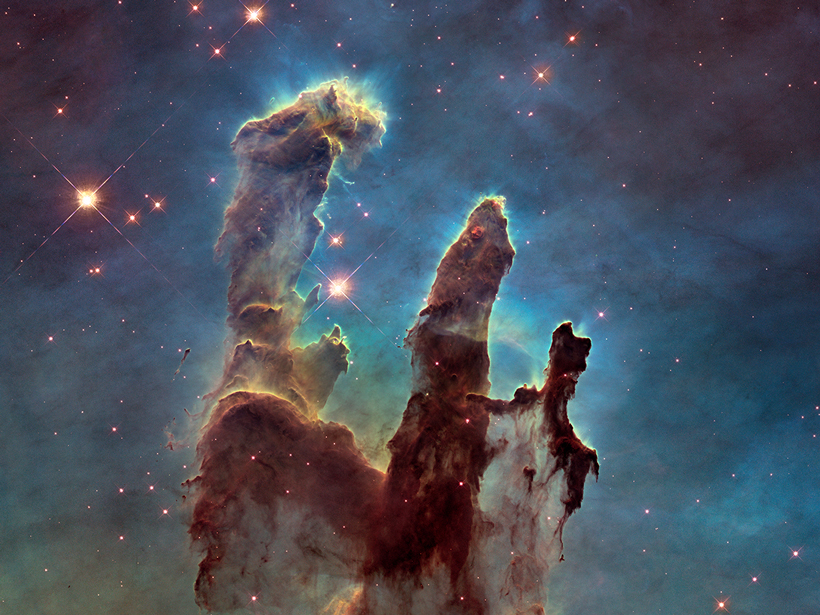Although all the exoplanets orbit closer than Mercury does to our Sun, liquid water may persist on some of them because their star radiates so little heat.
telescopes
Posted inNews
Final Mirror Segment Added to Powerful Future Space Observatory
After years of planning, testing, and assembly, the James Webb Space Telescope, the world's largest infrared, space-based observatory, is taking shape.
Posted inNews
Jupiter's Europa Helps Earthlings See Sister Moon's Volcano
By briefly slipping between Earth and sister Jovian moon Io, Europa fortuitously enabled an Earth-based telescope to observe, with greater detail than ever before, a huge, puzzling volcano on Io.
Posted inNews
Scientists Find "Close Cousin" of Earth
The Kepler space telescope spots a planet in a solar system 1400 light years away that closely resembles Earth in its size, distance from its star, and the type of star it orbits.
Posted inFeatures
Hubble's Legacy: The Pillars of Creation
The Pillars of Creation remains to this day Hubble's most iconic view of the cosmos.





